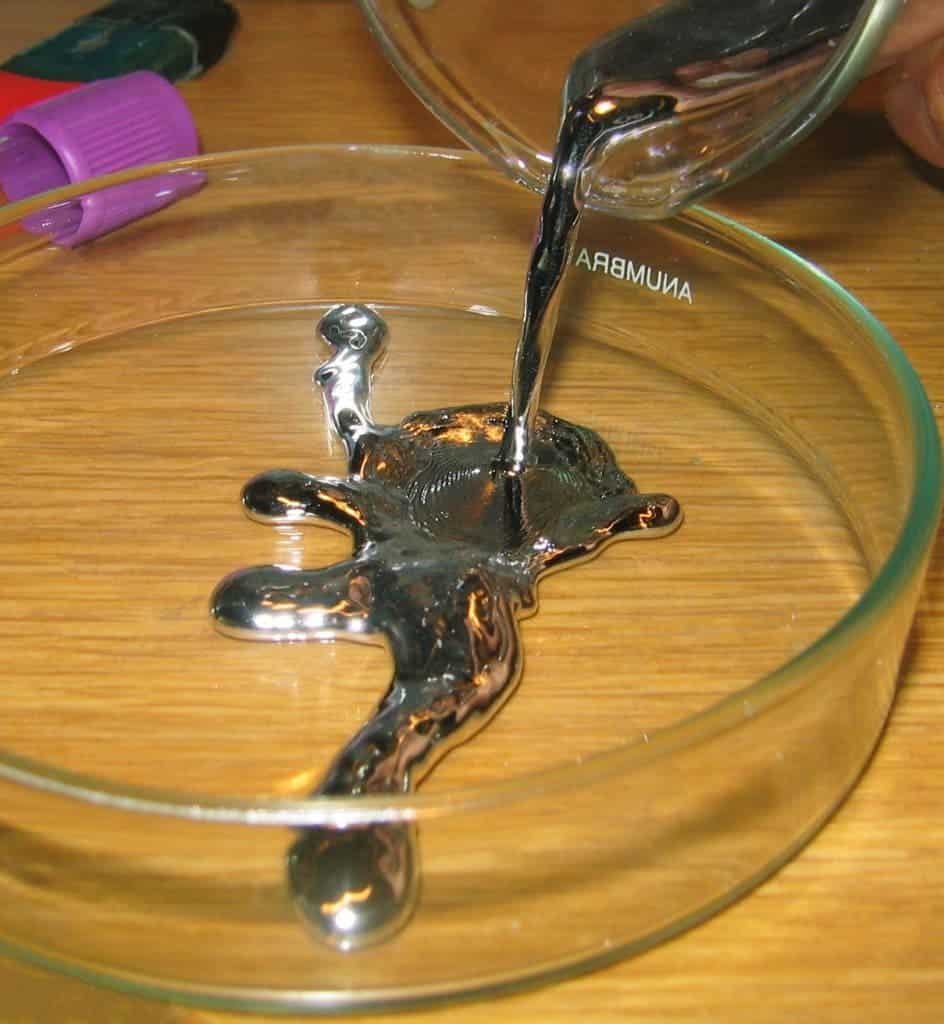The element mercury (Hg) is extremely toxic to most organisms, including humans. It’s deadly effects are thought to be due to it’s ability to block the function of certain key metabolic enzymes. Being so toxic, it has long been thought that mercury had no biological functions in the living world at all. At least that was presumption until a research team published the first evidence that a unique group of organisms can not only stand being around the stuff, but actually benefit by the presence of Mercury. In a paper published this month in Nature Geoscience, D. S. Gregoire and A. J. Poulain show that photosynthetic microorganisms called purple non-sulfur bacteria can use mercury as an electron acceptor during photosynthesis. These bacteria rely on a primitive form of photosynthesis that differs from the type common to plants. In the case of photosynthesis in plants, water is used as an electron donor, with carbon dioxide the electron acceptor. The result of this process is the production of sugars, the release of oxygen, and the removal of carbon dioxide from the air. Purple non-sulfur bacteria, on the other hand, usually prefer to live in watery environments where light is available to them, but the oxygen levels are low.
They use hydrogen as the electron donor, and an organic molecule such as glycerol or fatty acids, as the electron acceptor. This also results in the production of sugars, but does not release oxygen or remove carbon dioxide from the atmosphere. This process also generates too many electrons for for their organic electron donor to handle, leading to the potential for damage to other molecules in the cell.
The researcher showed that purple non-sulfur bacteria grow better when mercury is in their environment. The reason seems to be that the bacteria use the mercury to accept those extra electrons, reducing mercury from a high oxidation state to a low one. The oxidation state refers to the number of electrons that an atom can gain or lose. In the case of mercury, when it goes to its low oxidation state after gaining the extra electrons, it becomes a vapor and evaporates away into the atmosphere. In mercury’s high oxidation state it can form the soluble compound methyl-mercury, which can be toxic to other organisms.
It’s quite possible that the impact of mercury reduction by photosynthesis may extend far beyond the health of these unusual little microbes. Jeffry K. Schaefer, in the Department of Environmental Sciences at Rutgers University speculates that, “By limiting methyl-mercury formation and accumulation in aquatic food webs from microorganisms to fish, this process may even contribute to less toxic mercury ultimately ending up on our dinner plates.”
Journal Reference:
A physiological role for HgII during phototrophic growth. Nature Geoscience. February 2016, Volume 9 No 2 pp121 – 125 D. S. Grégoire & A. J. Poulain doi:10.1038/ngeo2629
Biogeochemistry: Better living through mercury. Jeffry K. Schaefer. Nature Geoscience: News and Views. 18, January 2016.










